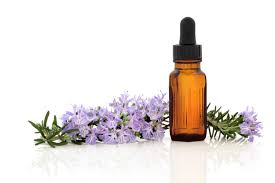
Essential oils are liquids which are extracted from plants through steam distillation, CO2 extraction or cold pressing. The supply chain is a complex web that crisscrosses the globe with players originating in any and all regions where individual native plants are grown. Essential oils have a long human history of use in perfumery, aromatherapy and as natural remedies. In recent years they have enjoyed a rapid and expansive resurgence due to increased awareness on the part of many consumers seeking to reduce or eliminate synthetic chemicals and reliance on pharmaceuticals in their day to day lives.
An internet search of essential oil retailers quickly unveils a crowded and confusing marketplace. The purpose of this article to lift that veil and assist with making an informed and educated choice when purchasing.
Before setting out to buy a consumer needs to keep this in mind at all times. There are NO STANDARDS, NO FDA REGULATIONS, NO LAWS OR GOVERNING BODIES that regulate the production or sale of essential oils in the United States. That means there are NO manufacturing standards, there is NO established grading system, there is NO purity testing required. The only thing that are in place are an FDA regulation that disallows retailers from claiming essential oils can treat or cure illness and weakly enforced Federal Trade Commission regulations that oversee the labeling and marketing of them for homeopathic use. Unfortunately, essential oils have uses beyond homeopathic medicine so it is easy for retailers to muddy the waters through marketing. Be cautious when you see any of the following:
- Terms like therapeutic grade
- Claims of approvals by some governing or official sounding body
- Claims that products meet and/or exceed guidelines established by some governing or official sounding body
- Claims such as Certified Pure therapeutic grade or implied FDA approval
- Any commercial seals or trademarks. A trademark is nothing more than a symbol a company has created to depict their company or product. Trademark laws do not require that this symbol be representative of the product. Some essential oil vendors have created very official looking marks.
All of the above are absolutely meaningless yet common attention getters designed to imply quality that may or may not be there. The most commonly used is the descriptive term ‘therapeutic grade.’ Clever marketing has lead to the misconception on the part of consumers that there actually is a therapeutic grade of essential oils, and then there are ‘all the rest’, when in reality no grading system exists at all. All of the above examples are invented terms and methods used by marketers.
This is not to say that retailers that employ these methods do not sell quality essential oils. They may, but do not rely on marketing claims alone to make a purchasing decision. A reputable retailer should readily provide the following information:
Country of plant origin, extraction process used, and either a distillation or expiration date. To determine essential oil authenticity, each oil should be identified with the plant’s scientific or botanical name, and in appropriate cases, the chemotype. Only some plants will have a chemotype. A chemotype is when the same plant will have a different chemical profile based on where it is grown.
A reputable essential oil business will carry oils tested with at least two tests, usually run simultaneously, the gas chromatography and mass spectrometry tests, or GC/MS. These tests assure purity. GC/MS can recognize synthetics in an essential oil as they have certain petroleum or nitrogen based signatures containing compounds that would then require further investigation. The GC/MS can detect “nature identical” isolated constituents such as Linalool, Geraniol, Citronellol, Eugenol, or Limonene. A GC/MS test produces the widest range of testing a single analysis can perform on an essential oil. This technology can measure the precise chemical makeup in a substance with their exact percentages. Performing this test on essential oils is crucial to scientifically prove if contaminants, synthetics, diluents, or any other adulterant is present. Responsible essential oil vendors will run these tests on oils they receive from a distiller. If the vendor you are looking at does not provide batch-specific GC/MS reports on their website, they should provide them on request.

